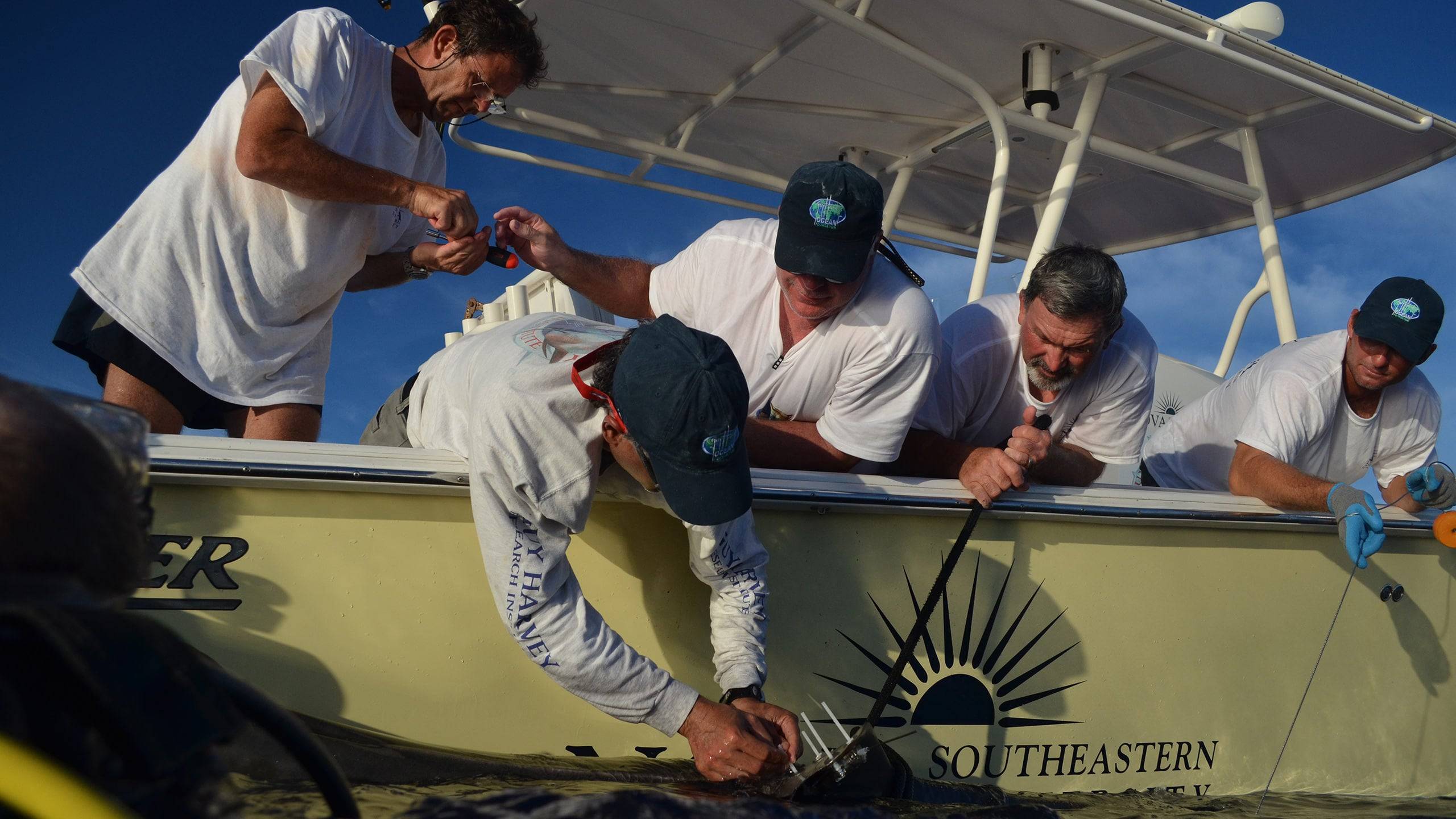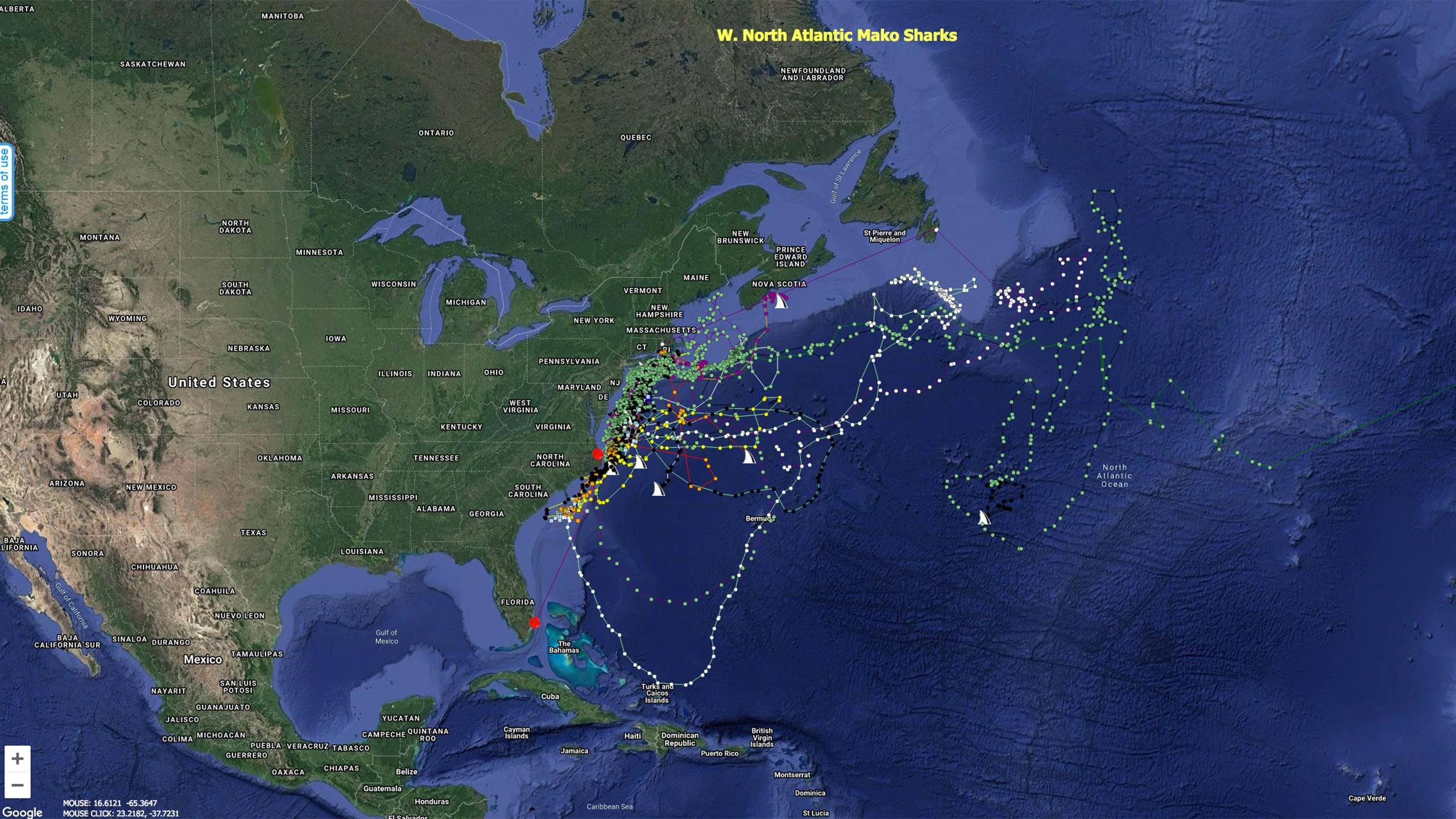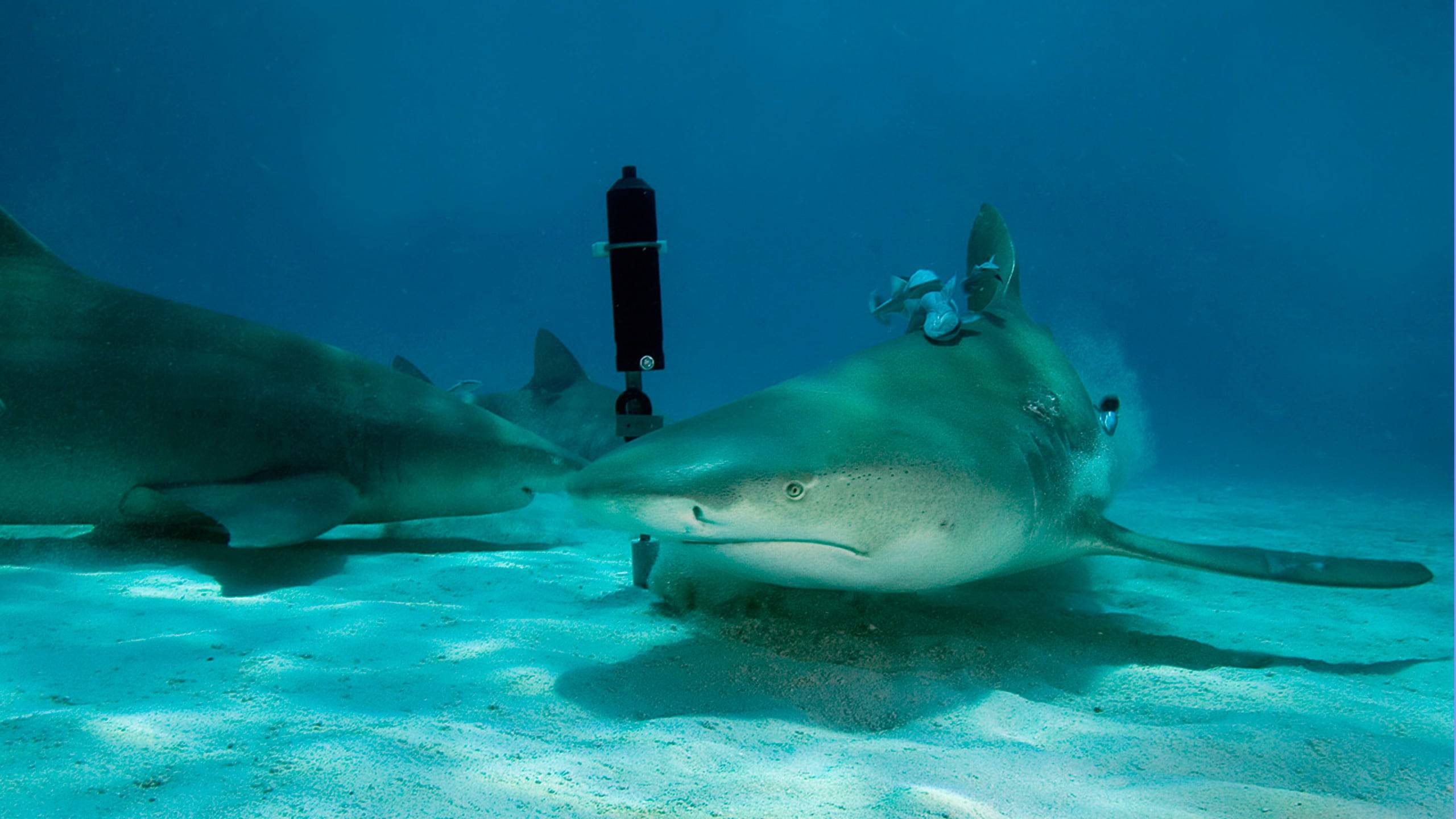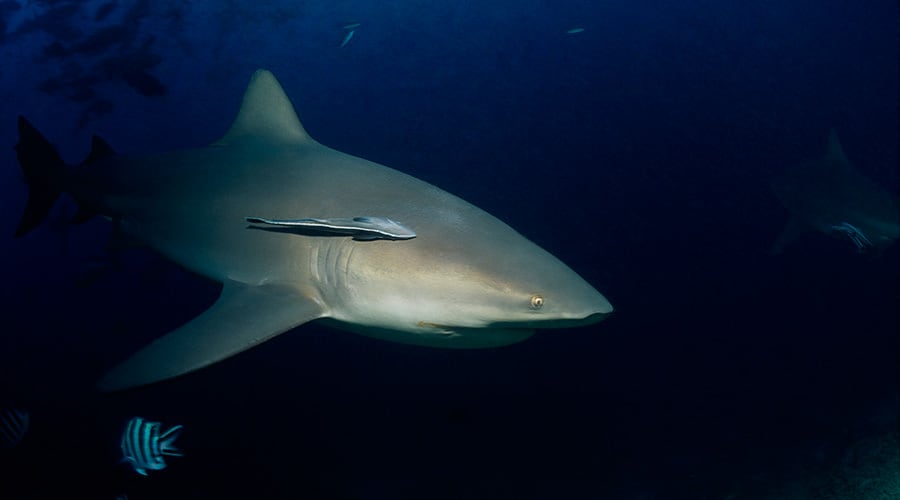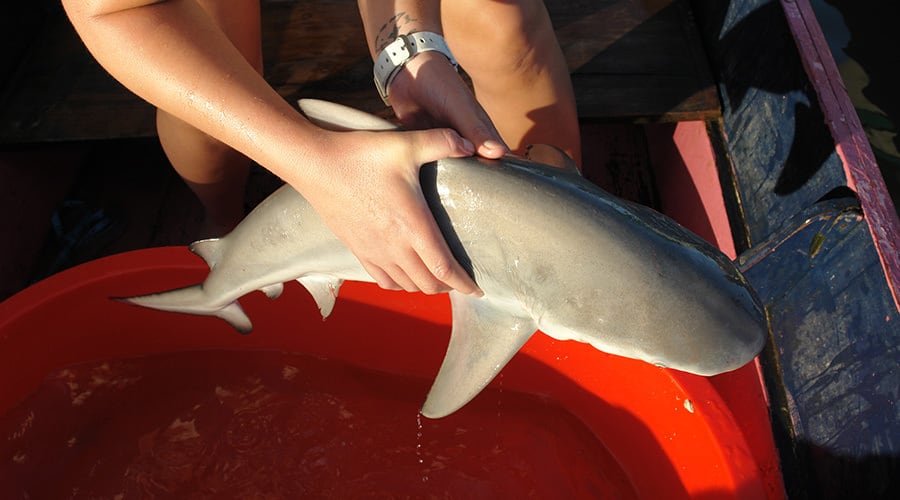Bull sharks are at home in warmer regions around the world. They occur in brackish water and even in fresh water. As one of the few large shark species, they like to stay close to the shore and can therefore be examined without the usual effort.
Bull shark in Fiji.
Photo © Klaus Jost
Background
Researching shark movements and migrations is an expensive process. Besides transmitters, receivers and travel costs, the required boats, their crew and fuel are often the main cost drivers of a project. The fact that bull sharks prefer to stay close to the shore, and even in rivers and lakes, significantly reduces these costs and makes these sharks a very good study object. In Walkers Cay, Bahamas, where the project manager's first work with bull sharks began, one can work with the animals directly on the beach. In Fiji at Shark Reef they can be easily reached by a dive boat owned by the diving company Beqa Adventure Divers, which works closely with the project team. During the dives the project team can mark the bull sharks and study their behavior.
Fiji and especially the island of Viti Levu are not only ideal to study adult bull sharks because of Shark Reef (see also the Foundation's long-term marine conservation project Fiji Shark Reef) but also because young bull sharks are found in the rivers of the island, especially the Navua River. Thus Viti Levu is probably a nursery for bull sharks.
Goal
The project aims to provide the most comprehensive information possible on the entire life cycle of bull sharks in Viti Levu – from mating to birth, their nurseries, up to the small and large-scale movement patterns of the adult sharks. Biochemical and especially genetic analyses of the populations will complete the picture.
The project is divided into different subprojects:
- the study of horizontal and vertical movement patterns of adult and juvenile bull sharks on the south coast of Viti Levu;
- direct behavioral observations in connection with the feeding of bull and other shark species in the Shark Reef Marine Reserve;
- the collection of tissue samples used for genetic identification of the bull sharks (local and global);
- biochemical analyses (local and global); and the
- collection of so called "Local Ecological Knowledge" or information from locals on the occurrence of Bull Sharks in Fiji rivers.
Methods
The large-scale movement patterns of bull sharks around Fiji were determined by means of satellite transmitters (Archival Pop-Up Tags). Over the years, a fine-meshed network of underwater receivers (Vemco) has been built up with the help of the Foundation to analyze the small-scale movement patterns and movements of juvenile bull sharks. The corresponding transmitters were either fed to the bull sharks, implanted or placed underneath their dorsal fins.
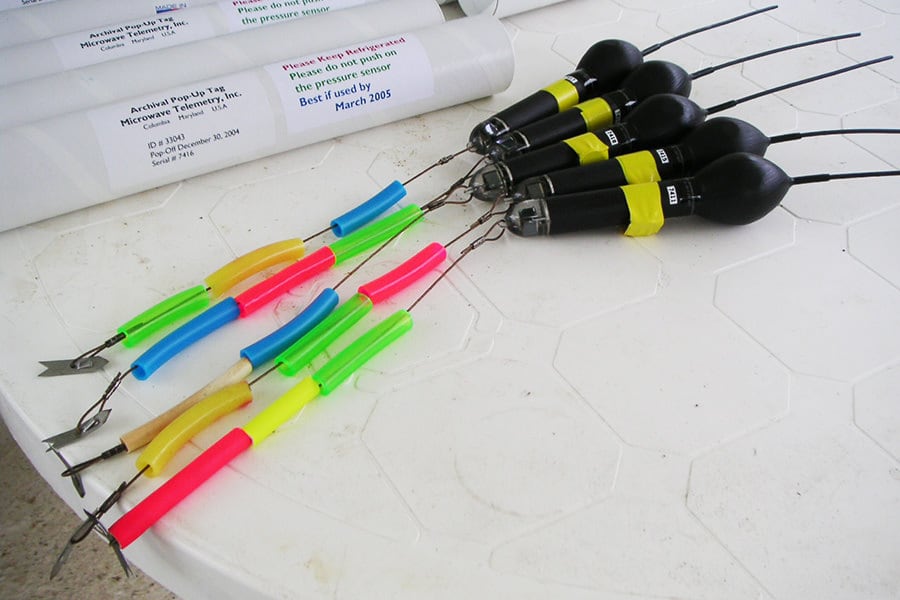
Pop-up satellite transmitters (Tags).
Photo © Mike Neumann
Genetic data was collected either by the team members themselves or together with the team of Prof. Mahmood Shivji (Nova University, Florida). Biochemical analyses were carried out by various specialized laboratories.
Results
Since the start of the project in 2004 important information about the life of bull sharks in Fiji could be gained. Bull sharks use the fish rich waters around Shark Reef in Fiji almost all year round, but they leave it towards the end of the year for a few weeks or months. Individual bull sharks show different levels of site fidelity. In addition, feeding during the dives does not seem to significantly influence the sharks' movement behavior.
Studies on population genetics were able to show the first genetic connection of the worldwide bull shark populations. Parentage analyses were also included, providing information on the degree of mixing of actually separate populations and indications of inbreeding.
The region around Shark Reef off Viti Levu and the rivers in the area, especially the Navua River, could be clearly identified as a bull shark nursery.
Juvenile bull shark from the Navua River.
Photo © Jürg Brunnschweiler
During the project, several short projects were also developed that were partly or fully financed by the Shark Foundation:
- A workshop on tracking methods was held at the annual meeting of the American Elasmobranch Society (AES) in 2007. Funding: CHF 3,700
- A study on the behavior of reef sharks in Fiji was made by Kirsty Richards, 2011. Funding: CHF 4,500
- From 2012 to 2014 a preliminary project was supported for the analysis of juvenile bull sharks in the three largest river systems of Fiji, the Rewa, the Sigatoka and the Navua River. Emerging from this pre-project is the Juvenile Bull Sharks in Fiji, developed in the context of a dissertation by the project manager Kerstin Glaus. Funding: CHF 10,700. .
Various data obtained from these easily accessible sharks can probably be transferred to other shark species that are much more difficult to access.
The results obtained from the project have so far been the subject of 8 scientific publications.
Project Status
Among other things, the Shark Foundation financed transmitters and receivers, consumables, sampling and travel expenses for the project.
The project was successfully completed in 2015.
Administrative Details
Project Satus: 2015 successfully completed.
Project Leader: Jürg Brunnschweiler
Funding: 2004 - 2015 approx. 79,600 CHF




